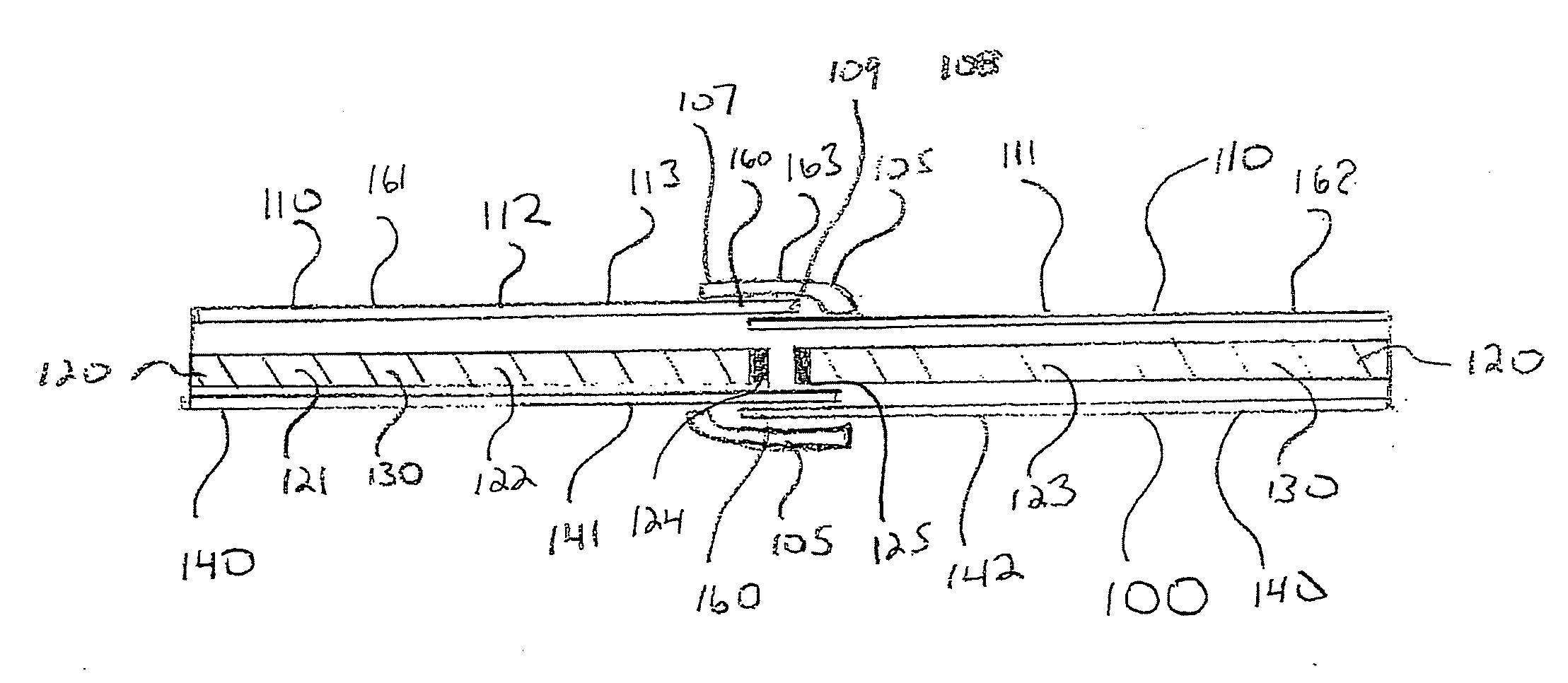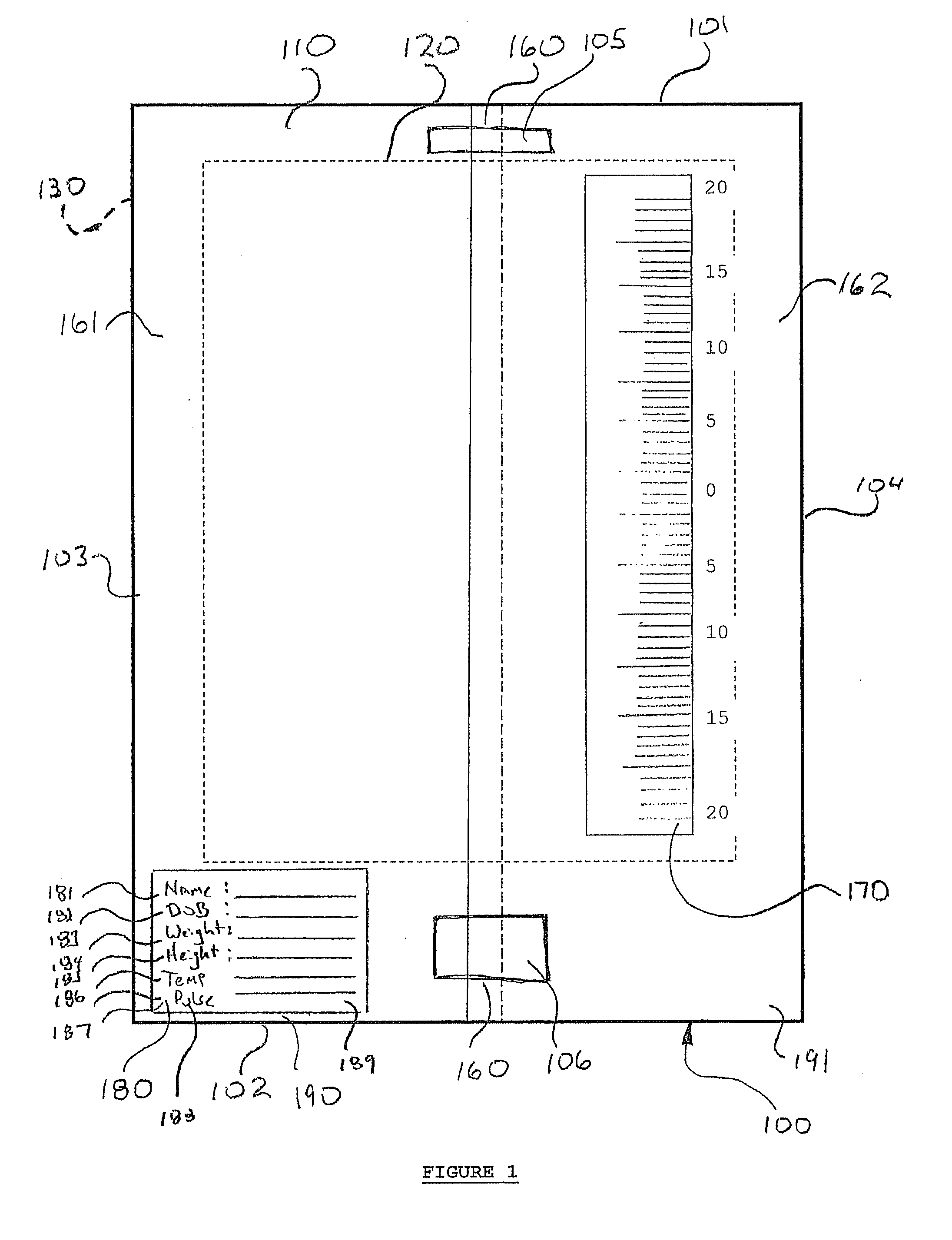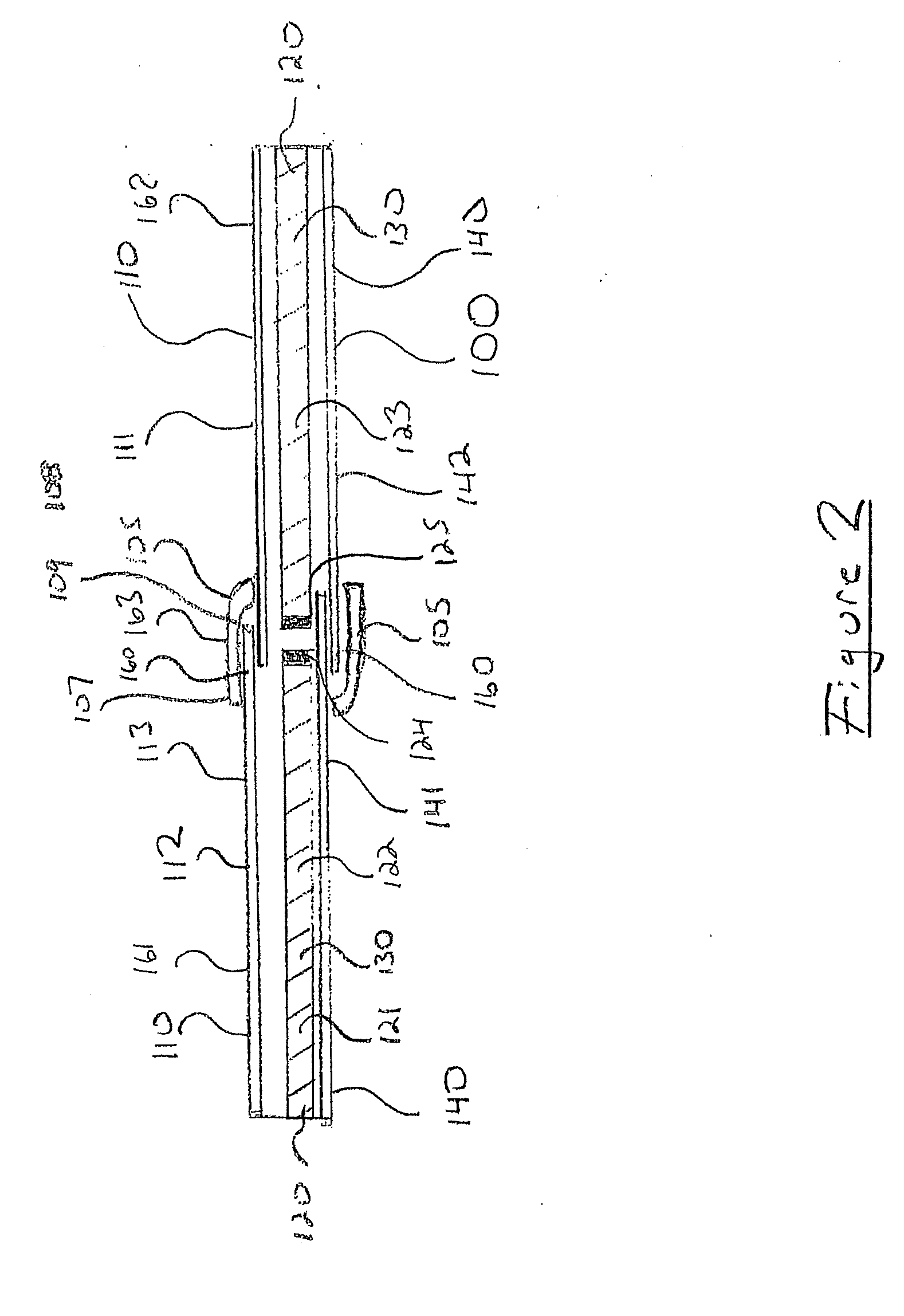Absorbency pad for use in neonatal care and related method of use
a technology for absorbent pads and neonatal care, applied in the field of absorbent pads, can solve the problems of increased risk of short and long-term complications for premature infants, difficult reduction of this health risk, and extremely fragile skin, and achieve the effect of reducing the risk of trauma or injury
- Summary
- Abstract
- Description
- Claims
- Application Information
AI Technical Summary
Benefits of technology
Problems solved by technology
Method used
Image
Examples
Embodiment Construction
[0019]The present invention will now be described more fully hereinafter with reference to the accompanying drawings, in which preferred embodiments of the invention are shown. This invention may, however, be embodied in many different forms and should not be construed as limited to the embodiments set forth herein. Rather, these embodiments are provided so that this disclosure will be thorough and complete, and will fully convey the scope of the invention to those skilled in the art. Like numbers refer to like elements throughout.
The Pad
[0020]As shown in FIG. 1 and FIG. 2, the invention is directed to a pad 100 having a plurality of layers including a contact layer 110, an absorbency layer 120 and a barrier layer 140. As shown in FIG. 1, the pad 100 is essentially rectangular and includes an upper edge 101, a lower edge 102, a left side edge 103, and a right side edge 104. Moreover, the pad 100 is of a sufficient size and dimension to be placed and maintained within a NICU incubato...
PUM
| Property | Measurement | Unit |
|---|---|---|
| weight | aaaaa | aaaaa |
| weight | aaaaa | aaaaa |
| birth weight | aaaaa | aaaaa |
Abstract
Description
Claims
Application Information
 Login to View More
Login to View More - R&D
- Intellectual Property
- Life Sciences
- Materials
- Tech Scout
- Unparalleled Data Quality
- Higher Quality Content
- 60% Fewer Hallucinations
Browse by: Latest US Patents, China's latest patents, Technical Efficacy Thesaurus, Application Domain, Technology Topic, Popular Technical Reports.
© 2025 PatSnap. All rights reserved.Legal|Privacy policy|Modern Slavery Act Transparency Statement|Sitemap|About US| Contact US: help@patsnap.com



